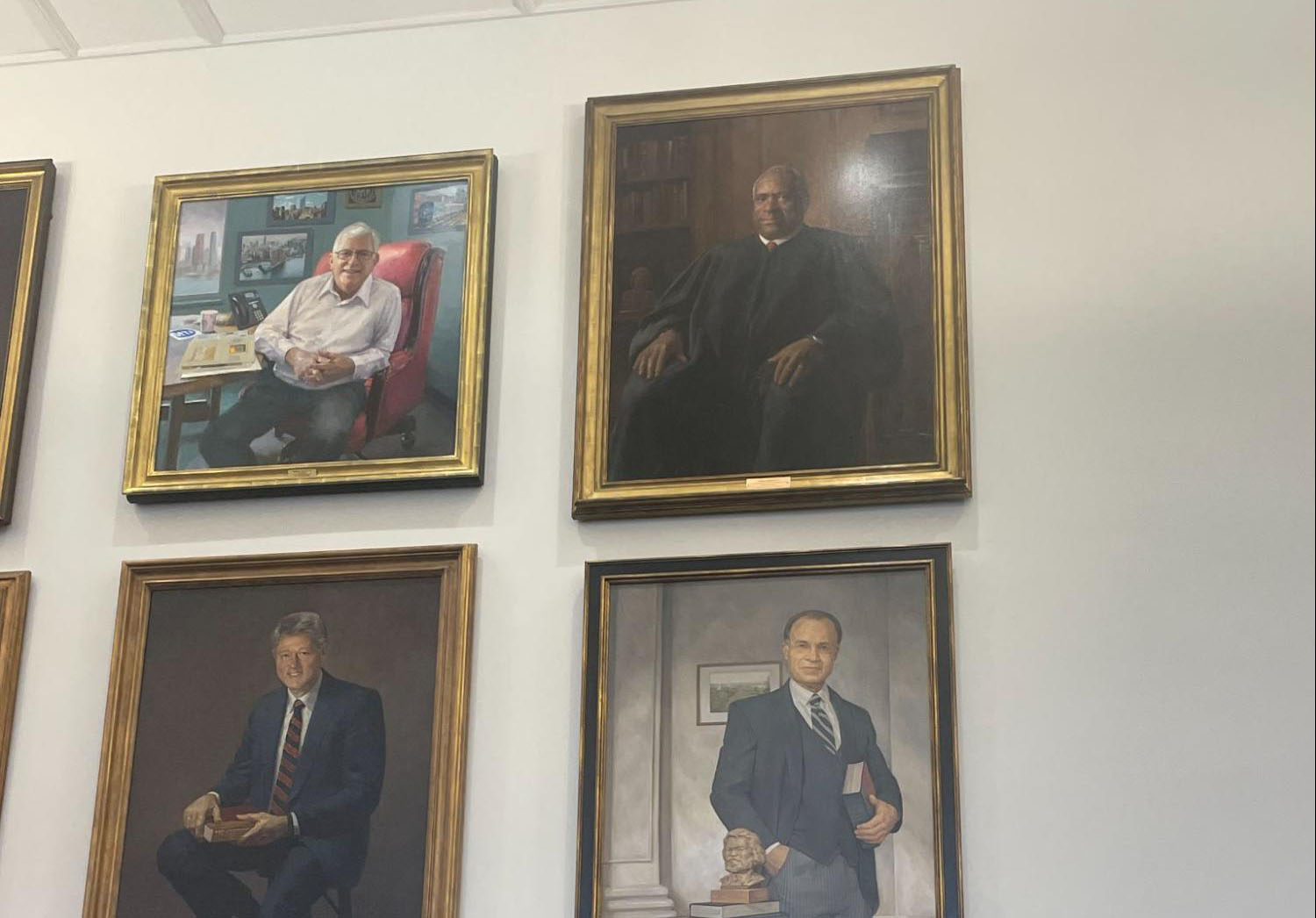Clarence Thomas portrait installed in Yale Law School over the summer
Some students described the installation — delayed six years since the portrait was received — as politically motivated.

Henry Liu, Contributing Photographer
As law students entered the Sterling Law Building in mid-August, they spotted a new face looking down on them in the Alumni Reading Room: Supreme Court Justice Clarence Thomas LAW ’74.
The portrait hangs next to portraits of other notable alumni of the Law School, including former president Bill Clinton LAW ’73. Though Thomas’s portrait was not on the walls when students left for the summer, new law students reported seeing it during their orientation.
Students across the political spectrum noted the timing as charged because the installation was delayed after it was originally commissioned in 2018.
“Justice Thomas joined the Supreme Court in 1991. It’s hard to believe the decision to install his portrait is completely unrelated to current politics,” Ilani Nurick LAW ’27 and Liz Bailey LAW ’27, co-presidents of the Yale Law Democrats, wrote in a statement to the News.
Conservative student leaders praised the decision as a move towards political diversity, while other students said the decision to install the portrait at this moment was a reflection of new institutional priorities.
Funding for the portrait originated over seven years ago, with a $105,000 donation from Texas billionaire and Republican donor Harlan Crow in 2018. The portrait was framed around March 2019 and delivered to the Law School shortly after, the portrait’s artist Jacob Collins told the Washington Free Beacon.
According to the Washington Free Beacon, then-Dean Heather Gerken acknowledged in an April 2018 letter to Crow the $105,000 donation would commission the portrait of Justice Clarence Thomas, with whom Crow was close friends.
Former Dean Guido Calabresi explained in 2015 that portraits fall into two categories: automatic and discretionary. Automatic portraits include alumni or faculty who have served as United States president, Supreme Court justice or chief judge of a circuit court and do not require approval. All others must be approved for display at the dean’s discretion.
Regardless of the category, all portraits — except those of former Law School deans — must be paid for by outside donors.
Because he is a Supreme Court justice, Thomas’ portrait should have automatically gone up after its delivery to the Law School in 2019, if the policies Calabresi described were then still in use.
A spokesperson for the Law School declined to comment on when the portrait was officially put up in the alumni room or if the portrait’s installation was ordered by Gerken or interim Dean Yair Listokin.
Conservative student leaders at the Law School praised the portrait.
“Justice Thomas is a trailblazer whose life and career embody perseverance, principle, and a deep commitment to the rule of law. We are proud to see Yale recognize his legacy and celebrate this tribute to one of the most distinguished jurists in American history,” Andrew Liu LAW ’26, president of the Yale Law Republicans, wrote in a statement co-signed by David Haungs LAW ’26, president of the Yale Federalist Society.
Other student leaders at the Law School had more mixed reactions to the portrait’s installment.
Saman Haddad LAW ’26, president of the Graduate and Professional School Senate, cast the decision as politically motivated.
“What lesson is YLS teaching by elevating Clarence Thomas in this political moment? The answer is clear. Our institutional values are defined by power, not principle,” Haddad wrote to the News.
Thomas has long had a strained relationship with his alma mater. In his autobiography, “My Grandfather’s Son,” Thomas wrote that he affixed a 15 cent sticker to his diploma and stored it in his basement, saying his degree “bore the taint of racial preference.”
In recent years, Thomas’ bitterness towards Yale appeared to soften. Thomas visited Yale in 2012, his first visit since graduating. He then sat for the portrait in 2018.
Directly to the left of Thomas’s portrait is a portrait of Richard Ravitch LAW ’58, who served as lieutenant governor of New York from 2009 to 2010. Sitting below Thomas’s portrait is Drew S. Days III LAW ’66, who served as solicitor general of the United States from 1993 to 1996 under President Clinton.
A small photo of Vice President JD Vance LAW ’13 hangs in a secluded hallway of the Law School.
Correction, Sept. 11: An earlier version of this article misspelled the name of Richard Ravitch LAW ’58, a former lieutenant governor of New York.







